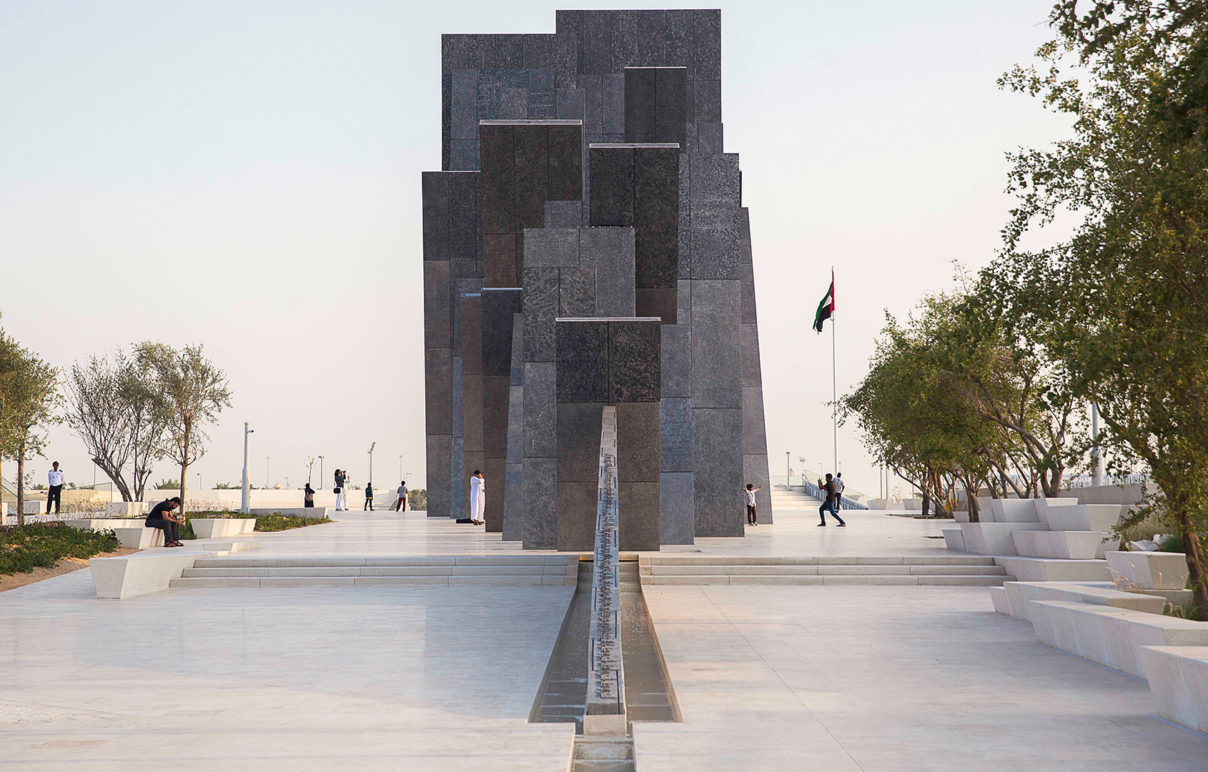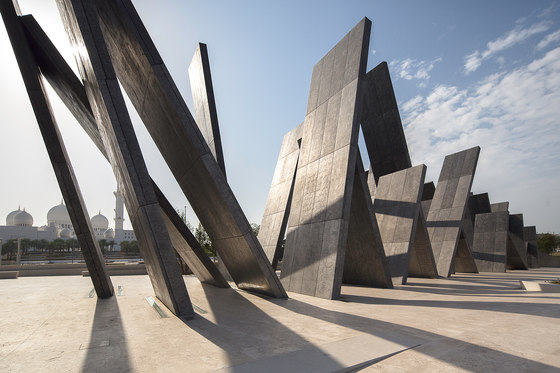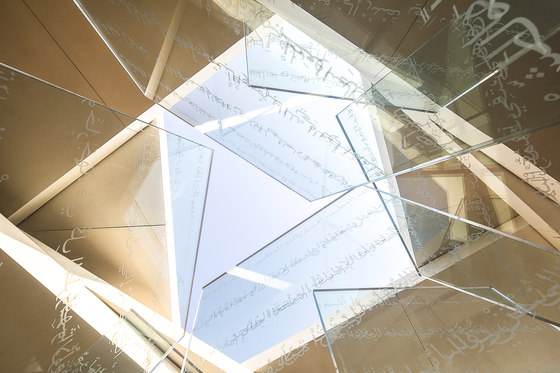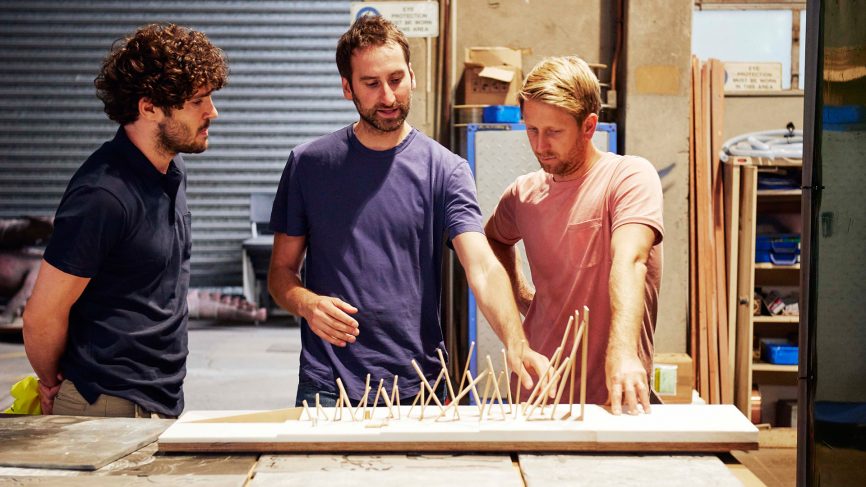
This is the first memorial dedicated to Emirati soldiers.
Image courtesy of: Architectural Digest
Wahat Al Karama literally means “the oasis of dignity” – a fitting title for the memorial chosen to immortalize the men (and present the names of those) who gave their lives for the UAE.
The most prominent feature is the “Memorial”. This building is comprises 31 huge aluminium-clad tablets, each leaning on one another to symbolize unity, solidarity and mutual support of the UAE’s seven nations. The long spine at the rear of the Memorial is engraved with the Pledge of Allegiance of the UAE Armed Forces and symbolically supports the other, strategically-placed, panels.

Image courtesy of: Architonic, photographed by: Jonathan Gainer
The tablets are formed from over 1,000 cast aluminum panels which are inscribed with a series of poems and quotations by the UAE’s Founding Father, as well as other notable leaders.
British artist Idris Khan was selected to design the Memorial. Of his end result, he says: “The idea was to create a park for reflection on both loss and remembrance, a spiritual place that conveyed unity and support. I wanted this monument to have positive and hopeful resonance while inspiring curiosity in sculpture and how contemporary art can influence emotions. The project allowed me to be ambitious, and having been able to create such work gives me great pride. It is a place for serenity within a city busy with construction and growth, a major part of a country’s history and landscape that will be absorbed by the cultural awareness of future generations.”

Sheikh Mohammed bin Zayed tours Wahat Al Karama.
Image courtesy of: The Arabian Post
The Pavilion of Honor is placed at the end of the “memorial journey” and meant to serve as a place for respect, honor and private reflection. In the pavilion’s center are seven upright glass panels which are surrounded by a water feature. Again here, the number seven represents the seven emirates of the UAE. The interior circular wall is made up of 2,800 aluminum plates inscribed with the names of the UAE’s fallen heroes. This aluminum came from armored vehicles used in active service.

Image courtesy of: Architonic, photographed by: Jonathan Gainer
The roof of the pavilion is constructed from eight slabs; seven symbolize the emirates of the UAE and the eighth represents the UAE’s heroes. On the front and back of each panel is the Pledge of Allegiance of the UAE Armed Forces, legible from whichever side the visitor reads it. At it’s entrance and along the top of the inside wall, two passages from the Qur’an are inscribed.
Walk just a touch further and you’ll come upon the Visitors’ Center. This is an interactive experience which recounts the memorial’s “story” and the UAE’s fallen heroes.

Idris Khan in center, flanked by Mark Thompson and Jamie Perrow of UAP.
Image courtesy of: Architectural Digest
Wahat Al Karama is a wonderful example of a successful creative collaboration between an artist and architects. Brisbane-based Urban Art Projects (UAP), lead by Liam Proberts, said they joined the project in order to help realize Idris Khan’s vision. As one of Britain’s most important and known interdisciplinary artists, UAP was thrilled to work together to make sure that the Crown Prince Court Emirate of Abu Dhabi can rest assured that this 46,000 square foot memorial turned out just as planned!